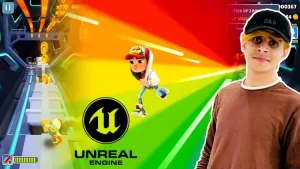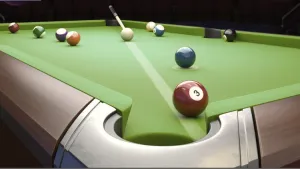What You Will Learn
- Level design in Unreal Engine and Unity
- Comprehensive introduction to level design
- In-depth analysis of rational design from a macro perspective
- How to create immersive scene compositions in levels
- How to effectively guide players through levels using scene management
- Utilizing architectural principles to create engaging experiences for players
- Maintaining an efficient workflow as a level designer
Requirements
- Willingness to learn level design
Description
“Comprehensive Level Design Masterclass Series”: A Complete One-Stop Tutorial
Why This Course Stands Out
This course goes beyond the basics of level design, delving into key elements, best practices, and how to become a top-notch level designer that meets industry standards. Instead of just 20+ hours of PPT lectures, the course features live demonstrations combined with theory, allowing students to witness firsthand how a level designer builds scenes in Unity and Unreal Engine, showcasing the perfect blend of theory and practice. Additionally, the course includes numerous documents, assignments, and quizzes to deepen understanding.
Course Structure
The course primarily consists of videos, supplemented with reference articles, books, and video links.
After completing this course, I guarantee you will be a more powerful level designer, able to apply key principles to your designs. The course is divided into 12 main chapters.
Chapter Breakdown
Chapter 2: Introduction to Level Design
As mentioned earlier, this section explores the role of a level designer, distinguishing between game design and level design. We will focus on how level designers use elements and mechanics within levels to create a more powerful and intuitive gaming experience while maintaining precise balance and rhythm. We will also explore the different audience types within the community and discuss the production phases and the timing of a level designer’s involvement in the project.
Chapter 3: Setting Up Unreal Engine
We will start by configuring Unreal Engine 4, learning how to download and run it, and briefly browsing the engine layout and the locations of various components. Then, we will create the first level to familiarize ourselves with the engine and provide quick access to information.
Chapter 4: Setting Up Unity Engine
Similarly, we will configure Unity, learn how to download and run the engine, and its basic setup, quickly understanding the engine layout. By creating the first level through practice, we will get familiar with Unity and summarize the methods of information retrieval.
Chapter 5: The Level Designer’s Workflow
Regarding workflow, like building levels, there is a highly effective design method. This section will explore how to start with creativity, set themes, locations, and backgrounds, and then establish project goals. Next, we will start designing the featured elements (such as mechanics, elements, etc.) of the project. Afterward, collect design references and clarify design goals. We can also build the game story background at this stage to enrich characters and enhance players’ sense of immersion.
Chapter 6: Maps, Level Decomposition, and Design Documentation
This section focuses on the preparation work needed to build levels. It is not just about jumping into the engine and tinkering around. Once clear difficulty curves and rhythms are set, effective work is needed to create a smooth gameplay flow. We will explore how to gradually increase the difficulty of mechanics, elements, and enemies, design the game rhythm to feel the level, create a three-act structure, and integrate all elements into the overall rhythm to create high-quality levels. I will showcase some excellent level design examples and explain their impact on creating game sequences.
Chapter 7: Composition in Level Design
This is a theory-heavy section of the course. We will not only discuss how to theoretically use layers (foreground, background, and focal points) but also learn how to design observation parameters, such as low angles, eye level, and high angles. By practically operating in Unity/Unreal Engine, we will create these examples to understand how these components effectively impact players. Afterward, we will learn how to distribute visual weight in scenes using asymmetrical and symmetrical compositions. Finally, we will discuss detail elements that can attract players’ attention.
Chapter 8: Guiding Players
To guide players, a level designer must carefully design levels. This is easier said than done. In this section, we will explore how to use horizontal lines, vertical lines, diagonal lines, and curves in level design to subtly guide players’ directions. Through examples in Unity/Unreal Engine, we will demonstrate effective methods of using these lines. At the same time, we will see how dominant elements in levels can become player guides and how to use space to achieve this.
Chapter 9: Building 3D Levels (Unity)
In this section, we will implement the work results of Chapter 6 in Unity, creating a complete map! Showcasing the greyboxing stage and how to use Unity store assets to decorate levels.
Chapter 10: Building 3D Levels (Unreal Engine)
This section repeats the operations of the previous chapter but in Unreal Engine!
Chapter 11: Entering the Industry
In this section, we will explore how level designers can utilize the tools at hand to immediately step into the industry and launch their careers after completing the course. Covering topics such as network building, creating personal websites, and portfolios.
My Commitment
Every student who joins the course can ask questions about their games and color usage, and I will personally answer all student questions.
Who This Course is For:
- Level designers
- Game designers
- Game developers
Click the button below to download.



